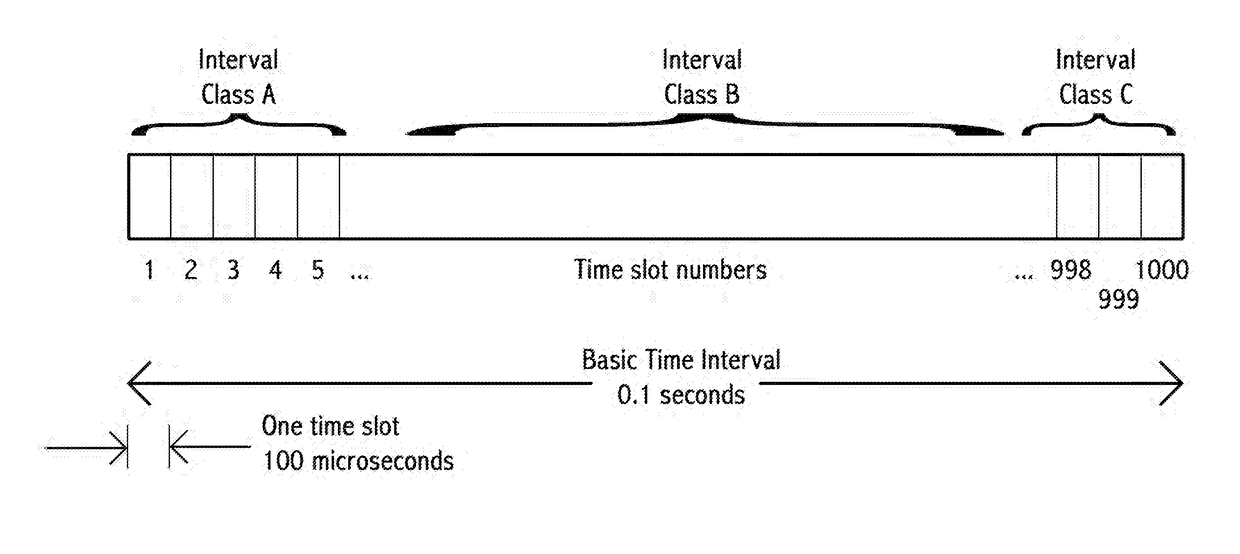V2v safety system using learned signal timing
a safety system and signal timing technology, applied in power management, instruments, transportation and packaging, etc., can solve the problems of not being widely used, widespread use not being implemented or planned, and vehicle accidents costing approximately $300 billion per year in the us, and achieve the effect of efficient encoding of vehicle size and weigh
- Summary
- Abstract
- Description
- Claims
- Application Information
AI Technical Summary
Benefits of technology
Problems solved by technology
Method used
Image
Examples
embodiment 201
[1039]202. The method of V2V communication in embodiment 201 further comprising:[1040]the first vehicle is nearby a second vehicle;[1041]the transmitter is located in the second vehicle.
embodiment 202
[1042]203. The method of V2V communication in embodiment 202 further comprising:[1043]the step of receiving information about a second, nearby vehicle comprises distance information about the second, nearby vehicle from a sonar sensor in the first vehicle.
[1044]204. The method of V2V communication in embodiment 202 further comprising:[1045]the step of receiving information about a second, nearby vehicle comprises information about the second, nearby vehicle from a camera in the first vehicle.
[1046]205. The method of V2V communication in embodiment 202 further comprising:[1047]the step of computing position, heading and speed of the second vehicle by using the position, heading and speed of the first vehicle plus the difference in position, heading and speed of the second vehicle in relation to the first vehicle.
[1048]206. The method of V2V communication in embodiment 202 further comprising:[1049]the second vehicle V2V transmit packet is formatted as if it were being transmitted from...
embodiment 209
[1056]210. The method of V2V communication in embodiment 209 further comprising:[1057]the selecting the second vehicle from a set of nearby vehicles by input from the driver of the first vehicle uses a touch screen as the input device, wherein the driver touches a representation of the second vehicle to make the selection.
[1058]211. The method of V2V communication in embodiment 201 further comprising the steps of:[1059]assigning a risk value to the first vehicle based at least in part on at least one of the computed vehicle' transmit position, computed vehicle transmit heading, and computed vehicle transmit speed;[1060]including the risk value in the transmitted V2V transmit packet.
[1061]201. A method of vehicle to vehicle (V2V) communication comprising:[1062]receiving vehicle position information about a first vehicle;[1063]computing vehicle transmit position about a first vehicle;[1064]computing vehicle transmit heading about a first vehicle;[1065]computing vehicle transmit speed ...
PUM
 Login to View More
Login to View More Abstract
Description
Claims
Application Information
 Login to View More
Login to View More - R&D
- Intellectual Property
- Life Sciences
- Materials
- Tech Scout
- Unparalleled Data Quality
- Higher Quality Content
- 60% Fewer Hallucinations
Browse by: Latest US Patents, China's latest patents, Technical Efficacy Thesaurus, Application Domain, Technology Topic, Popular Technical Reports.
© 2025 PatSnap. All rights reserved.Legal|Privacy policy|Modern Slavery Act Transparency Statement|Sitemap|About US| Contact US: help@patsnap.com



